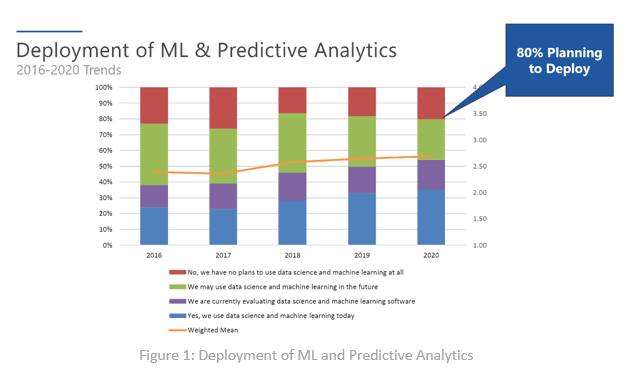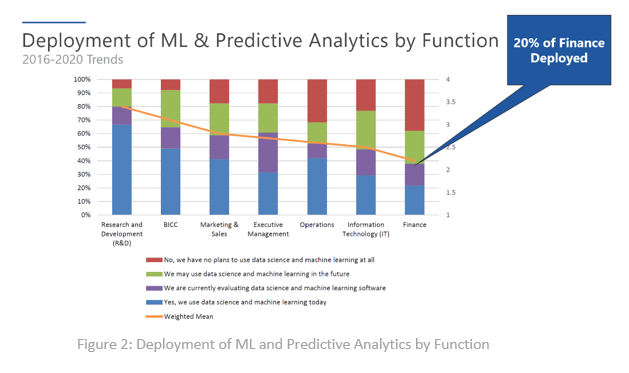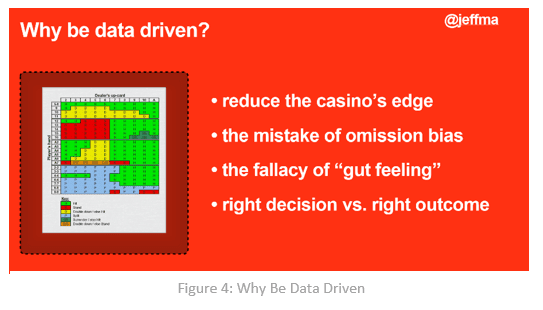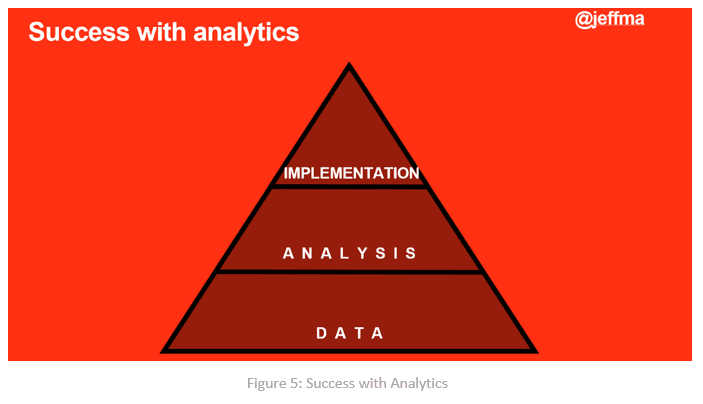No matter where your team is in the Finance transformation journey, it’s always a good time to take more advantage of advanced analytics. Why? Well, like it or not, advanced analytics – such as predictive analytics and machine learning (ML) – are here to stay. How am I so confident? It’s pretty simple, actually. How many Finance leaders wouldn’t want to infuse statistically significant forecasts into the planning process to help reduce the fog of uncertainty? None!
In fact, with the explosion of data and compute power available today, the barriers of entry for using advanced analytics are lower than ever. So what’s holding Finance teams back? Here’s my take – Finance teams aren’t sure how to leverage advanced analytics for everyday processes without disrupting people and processes.
Taking advantage of advanced analytics was the topic of our recent webinar, “Playing Smarter: Using Analytics to Win Big.” Featuring analytics expert Jeff Ma and yours truly, the webinar covered a range of topics, including the use of advanced analytics in Finance today, Jeff’s personal story and practical advice for those who are just starting the journey into advanced analytics.
Adoption of Predictive Analytics and ML in Finance
After giving a brief overview of the OneStream platform, I kicked off the webinar by sharing a few insights from Dresner Advisory’s Wisdom of Crowds® Data Science and ML Market Survey.
To little surprise, the market buzz around advanced analytics is tangible, with 80% (see Figure 1) of survey respondents noting that they plan to deploy ML and predictive analytics in the future. And over 50% of organizations are either already using advanced analytics or evaluating software to do so.
Sounds promising, right?

It sure does. But when you break down the data by function (see Figure 2), the research tells a much different story. What’s that? The data shows that only 20% of Finance organizations are currently deploying advanced analytics and that Finance actually lags most functions, despite all the buzz in the market.

Here are a few questions Finance teams can ask themselves to help move beyond the hype of advanced analytics:
- Does Finance really need to learn how to build ML and predictive models?
- What are the use cases where Finance can interact with advanced analytics within day-to-day processes?
- If it was possible to easily interact with advanced analytics for day-to-day use cases, rather than spend time building models, would Finance teams increase adoption?
Here’s my take. If we can conquer the complexities of creating models to help Finance teams leverage their data and interact with predictive models, we’ll see adoption increase within Finance.
After my presentation, I then welcomed Jeff Ma to the webinar to lead the audience through how to take advantage of advanced analytics to make data-driven decisions.
Data-Driven Decision-Making Featuring Jeff Ma
Jeff kicked off his presentation by sharing his personal story, starting with his experience as a member of the MIT Blackjack Team in the mid-1990s. It was this experience that was the basis for the main character of the book Bringing Down the House and the film 21 (see Figure 3).

From there, Jeff went on to a successful career, one that has included founding several technology startups, consulting for professional sports teams and most recently, serving as General Manager for Microsoft Startups, a unit focused on recruiting startups to use Microsoft technologies.
After a brief introduction, Mr. Ma shared some key factors for why a data-driven approach (see Figure 4) was critical to his success, both in blackjack and within his career.

These same lessons are relevant for Finance teams too. Here are just a few examples:
- Reducing omission bias is especially crucial for Finance teams who provide decision support to their business partners. Why? Because with so many stakeholders to consider and so much data available today, many organizations struggle with “analysis paralysis.” A data-driven approach and culture provides Finance teams with the means to cut through the noise and focus on driving performance.
- Supplementing “gut feel” with data-driven, statistically significant models is an effective way to spur collaboration with line-of-business partners and drive effective dialogue. Such models are especially powerful in planning-related use cases, where advanced analytics provide Finance leaders with the ability to help set targets, validate bottom-up forecasts or seed new forecasts with predictive models.
- Focusing on the right decision vs. the right outcome is a critical element for building a successful culture for advanced analytics. Why? Because organizations who “trust the process” of utilizing statistically significant models are consistently more likely to “make the right decisions” much more often than those who don’t, even if sometimes the expected outcome doesn’t materialize.
Mr. Ma’s guidance reinforced the importance of setting realistic expectations when deploying advanced analytics. How? By starting with a longer-term strategy that focuses on consistency and execution rather than assuming that advanced analytics are going to help “find a needle in the haystack.”
Mr. Ma and I then closed out the webinar by sharing a few additional tips for organizations and Finance teams who are just getting started with advanced analytics.
Fireside Chat – Putting Analytics to Work
Our fireside chat focused on the need for organizations to consider analytics as part of a broader framework. Here are the key ingredients (see Figure 5) to create, as Mr. Ma noted, “success with analytics”:

- Data – According to Mr. Ma, data is the foundation for an effective advanced analytics strategy. Organizations should consider their data to be a competitive advantage. Mr. Ma spoke about the need for organizations to be patient and invest in their data strategies rather than rushing into advanced analytics efforts.
- Analysis – Ma. reemphasized that advanced analytics is not just math. Rather, advanced analytics is science. For Finance leaders, this feedback is especially powerful to consider as they consider opportunities to leverage advanced analytics to expand the dialogue with their business partners to collaborate on key decisions and plans. It’s “okay” to leverage analytics to help validate key assumptions or input from others. After all, finding new and creative ways to “ask why” is part of what makes great Finance leaders great.
- Implementation – We concluded with a brief discussion on the importance of organizational culture as a key success factor for implementing advanced analytics. Mr. Ma noted the need for organizational leaders to focus their teams on making incremental progress. Successful analytics deployments require execution to build credibility and gain trust from key stakeholders.
Learn More
To hear the rest of our fireside chat or learn more about Jeff Ma’s story, watch the replay of our webinar here. And feel free to contact OneStream if your organization is ready to take its analytics strategy to the next level and win bigger!
Get Started With a Personal Demo



